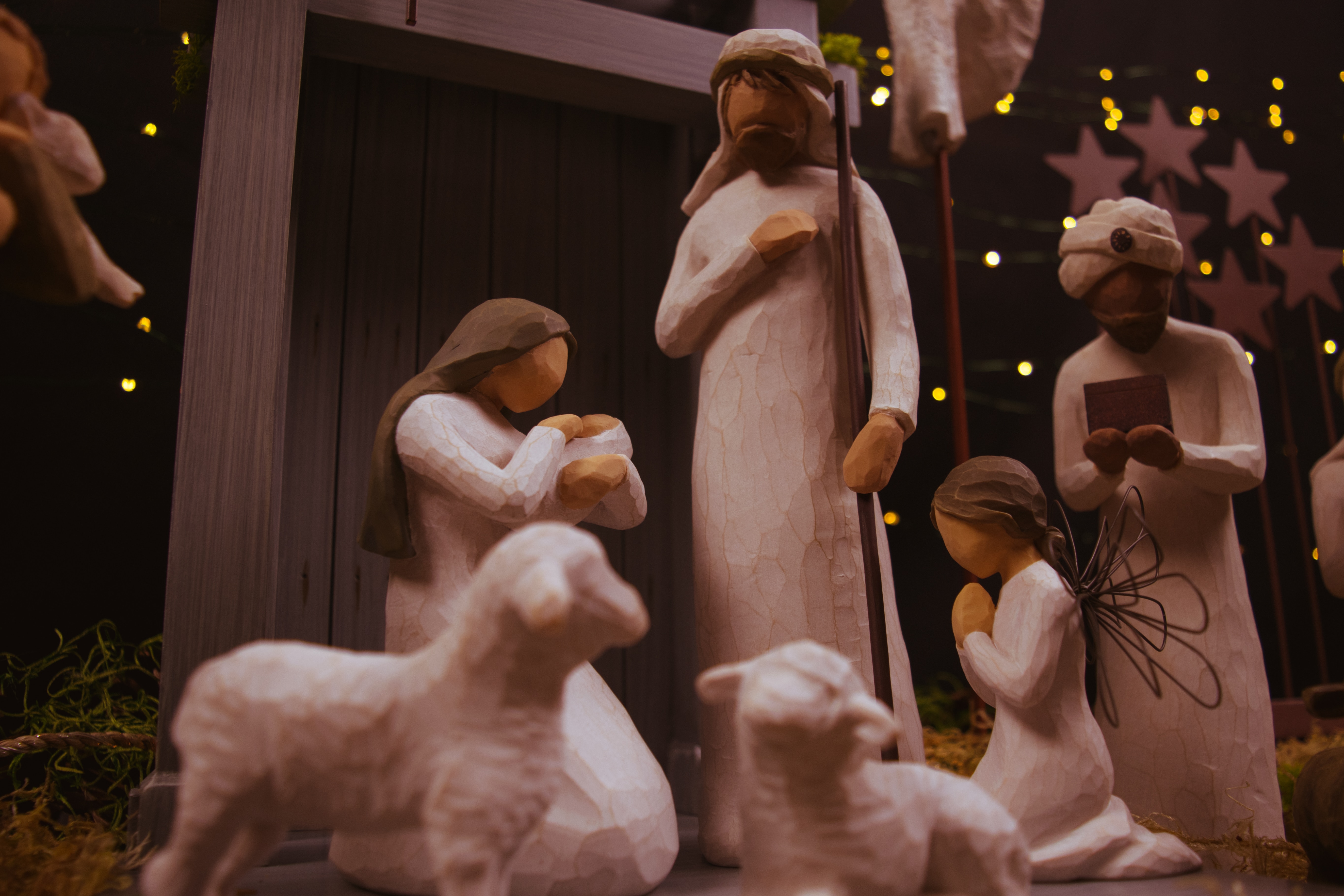Merry Christmas Wishes 2025 - Check History of Christmas
Christmas is one of the most cherished festivals around the world, celebrated with love, joy, and togetherness. As we prepare to welcome Christmas 2025, homes, streets, and hearts begin to glow with festive cheer. The season brings families closer, inspires acts of kindness, and reminds everyone of the true spirit of giving. Whether you are sharing Merry Christmas wishes, decorating your Christmas tree, or learning about the rich history of Christmas, this festival continues to unite people across cultures.

Also Check: Christmas Essay
What is Christmas & When is it Celebrated in 2025?
Christmas marks the birth anniversary of Jesus Christ and is observed every year on December 25. It is a global festival known for its themes of hope, peace, forgiveness, and love.
Important Points
Christmas Day 2025 will be celebrated on Thursday, December 25.
Christmas Eve, observed on December 24, marks the beginning of the celebrations.
Christmas is a public holiday in many countries, including India.
History of Christmas: How the Festival Began
The history of Christmas stretches back centuries and blends Christian traditions with ancient winter celebrations.

Key Highlights from Christmas History
Christmas was originally known as the Feast of the Nativity.
The popular abbreviation “Xmas” comes from the Greek letter Chi (X), symbolizing Christ.
The date December 25 was established in the 4th century to align with Roman winter festivals.
Over time, the festival absorbed cultural traditions—leading to the modern, joyful celebration of Christmas 2025.
Significance of Christmas for Students
Christmas is more than a holiday—it brings meaningful lessons and opportunities for students:
Encourages family bonding and togetherness.
Promotes values like gratitude, compassion, and generosity.
Schools often host quizzes, plays, craft events, and celebrations.
Winter holidays allow students to rest and prepare for the upcoming year.
Popular Christmas Traditions & Activities
Decorating the Christmas Tree: Families beautify the Christmas tree with lights, ornaments, and stars—symbolizing hope and everlasting joy.
Attending Midnight Mass: Many Christians attend church services on Christmas Eve to commemorate the birth of Jesus Christ.
Exchanging Gifts: Gift-giving reflects love, appreciation, and the spirit of sharing.
Singing Christmas Carols: Carols bring communities together through joyful music and festive cheer.
Santa Claus Traditions: Santa represents kindness, imagination, and childhood wonder—making Christmas magical for children.

Regional Christmas Celebrations in India
India celebrates Christmas with vibrant cultural variations:
Goa: Night masses, festive markets, and traditional sweets.
Northeast India: Community feasts, choir singing, and processions.
Tamil Nadu & Kerala: Stars, cribs, and large family gatherings.
Mumbai & Kolkata: Streets lit with decorations and lively festivities.
How to Participate in Christmas 2025 Celebrations
Here are meaningful ways to enjoy Christmas 2025:
Join community events, masses, or school celebrations.
Spend time with family and friends.
Make handmade decorations or gifts.
Share festive treats with neighbors.
Donate to the needy or volunteer at charitable events.
Tips for Eco-Friendly and Safe Christmas Celebrations
Use eco-friendly decorations and energy-saving lights.
Switch to reusable ornaments.
Maintain a balance between fun and rest.
Celebrate respectfully across cultures and traditions.
Merry Christmas Wishes 2025 – Best Messages to Share
Here are Top 10 Merry Christmas Wishes to spread joy:
May your Christmas 2025 sparkle with love, warmth, and happiness.
Wishing you peace and joy this Merry Christmas and always.
May the magic of Christmas fill your home with blessings.
Sending heartfelt Christmas wishes for a season full of love.
May your Christmas tree shine bright and your heart even brighter.
Wishing you a joyful Christmas surrounded by family and cheer!
May this Christmas bring new opportunities and endless happiness.
Warm wishes for a beautiful and blessed Christmas 2025.
May peace, hope, and love be yours this Christmas and all year round.
Wishing you Merry Christmas and a prosperous New Year ahead!

Meaning Behind Christmas Traditions (Wishes, Tree & More)
Christmas Wishes Meaning: Exchanging Christmas wishes symbolizes spreading hope, blessings, and goodwill.
Christmas Tree Meaning: The Christmas tree represents eternal life, hope, and the joyous spirit of celebration.
Christmas Spirit: Saying Merry Christmas is a gesture of warmth and unity—reminding everyone to cherish togetherness.
Key Takeaways: Christmas CBSE Guide (2025)
Christmas is a festival rich in spirituality, joy, and cultural heritage. Whether you celebrate through prayer, gatherings, decorating your Christmas tree, or sending Merry Christmas wishes, the festival continues to inspire harmony and happiness. For students, the holiday offers meaningful lessons and lasting memories, making Christmas 2025 a vibrant part of the academic and personal calendar.
Related Articles
Here are some useful links related to this topic.
Christmas Day Celebration – Learn how Christmas is celebrated around the world.
Christmas Eve – Explore the customs and traditions observed before Christmas Day.
Christmas Speech – Find speeches for school events and Christmas programs.
Christmas Stories – Discover classic and modern Christmas stories for readers.
FAQs on Christmas 2025: Meaning, History, Traditions & Merry Christmas Wishes
1. What was Christmas originally called?
Christmas was originally known as "Christ's Mass", a religious observance in honor of the birth of Jesus Christ. Earlier winter festivals, such as Saturnalia (Roman) and Yule (Norse), also influenced the timing and customs of Christmas celebrations.
2. What does the 'T' stand for in Christmas?
In Christmas, the 'T' does not stand for anything specific. However, 'Xmas' is a common abbreviation for Christmas, where the 'X' represents the Greek letter Chi, the first letter of 'Christ' in Greek. 'Xmas' is simply a shorter way to write Christmas.
3. How did December 25 become Christmas?
December 25 was chosen as the date for Christmas to align with existing pagan winter solstice festivals and because some early Christian leaders believed it matched the date of Jesus’s birth. Key reasons include:
- Coincided with Roman festival Saturnalia and the birthday of Sol Invictus (the Sun God)
- Early Christians adopted this date for its symbolic meaning—light returning after winter’s darkness
4. What is the meaning of Christmas in the Bible?
The Biblical meaning of Christmas centers on the birth of Jesus Christ in Bethlehem, which is seen as the arrival of God’s son and the savior of humanity. Key points include:
- Fulfillment of Old Testament prophecies about the Messiah
- Celebration of peace, love, and hope for believers
- Described mainly in the Gospels of Matthew and Luke
5. Who started the tradition of the Christmas tree?
The modern Christmas tree tradition began in Germany during the 16th century. Key facts:
- Christians brought decorated evergreen trees into their homes
- It symbolized everlasting life and hope
- The custom spread to other countries, especially popularized in England by Queen Victoria and Prince Albert
6. What are the main traditions of Christmas?
Major Christmas traditions include a variety of cultural and religious customs such as:
- Decorating Christmas trees with lights and ornaments
- Exchanging gifts and greeting cards
- Singing Christmas carols and hymns
- Hanging stockings for Santa Claus to fill
- Preparing special holiday meals
- Displaying wreaths and festive lights
7. How is Christmas celebrated around the world?
Christmas celebrations differ globally but often share common elements. Examples include:
- Attending midnight mass or church services
- Exchanging gifts and cards
- Special family gatherings and feasts
- Unique customs such as the Piñata in Mexico, St. Lucia processions in Sweden, and barbecues in Australia
8. Why do people hang stockings on Christmas?
Stockings are hung on Christmas based on the legend of St. Nicholas, who is believed to have left coins in stockings hung by the fireplace. Today, children often hang stockings to be filled with gifts and treats as part of Christmas tradition.
9. What is the history of Christmas cards?
Christmas cards originated in England in 1843, when Sir Henry Cole created the first commercial card. These cards are now exchanged worldwide to share festive greetings and good wishes for the season.
10. What is the story behind Christmas carols?
Christmas carols are festive songs that celebrate the birth of Jesus and the holiday spirit. They began as communal songs in Europe centuries ago, gradually evolving into religious and popular music performed in churches and public spaces.
11. What day is Christmas celebrated in 2025?
Christmas in 2025 will be celebrated on Thursday, December 25. It is a public holiday in many countries and marks the annual observance of the birth of Jesus Christ.
12. Why is Christmas important for people of different cultures?
Christmas is important across cultures because it:
- Promotes messages of peace, generosity, and hope
- Brings families and communities together
- Blends religious and non-religious customs that appeal to people of all backgrounds
- Inspires acts of kindness and festive celebrations worldwide







